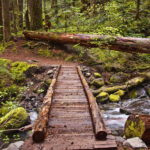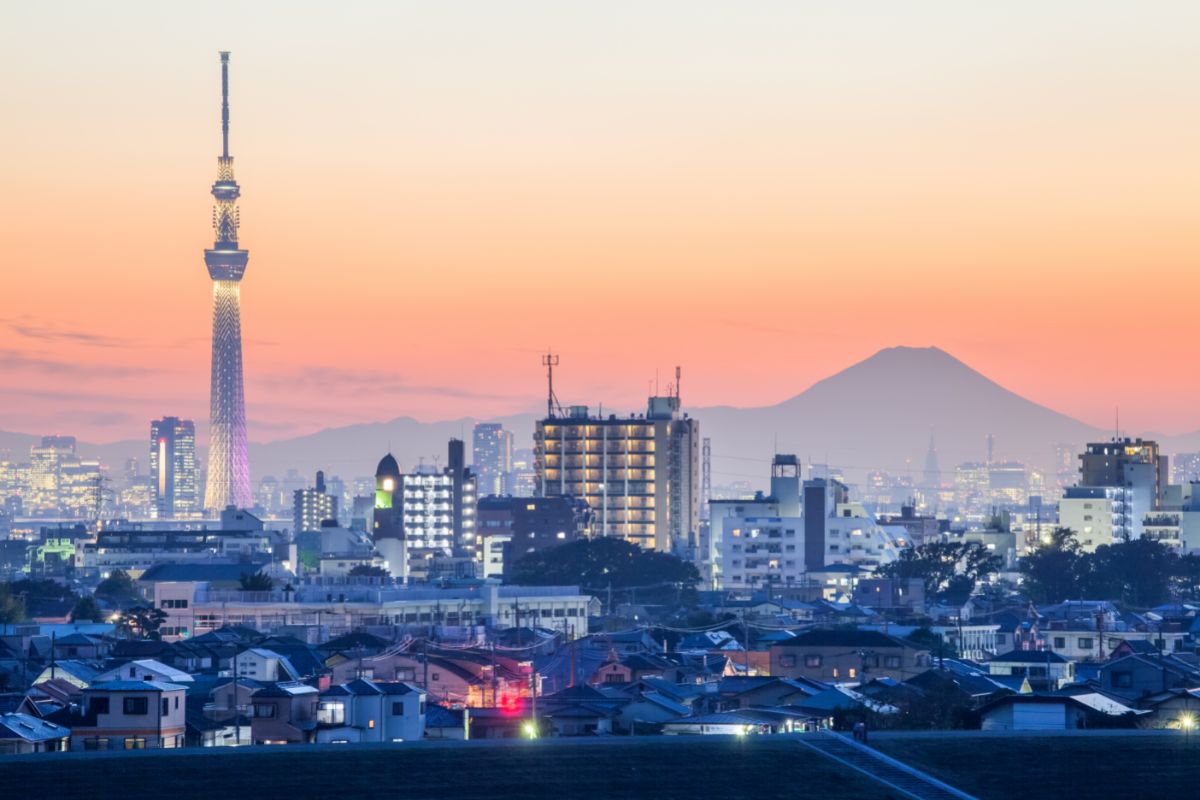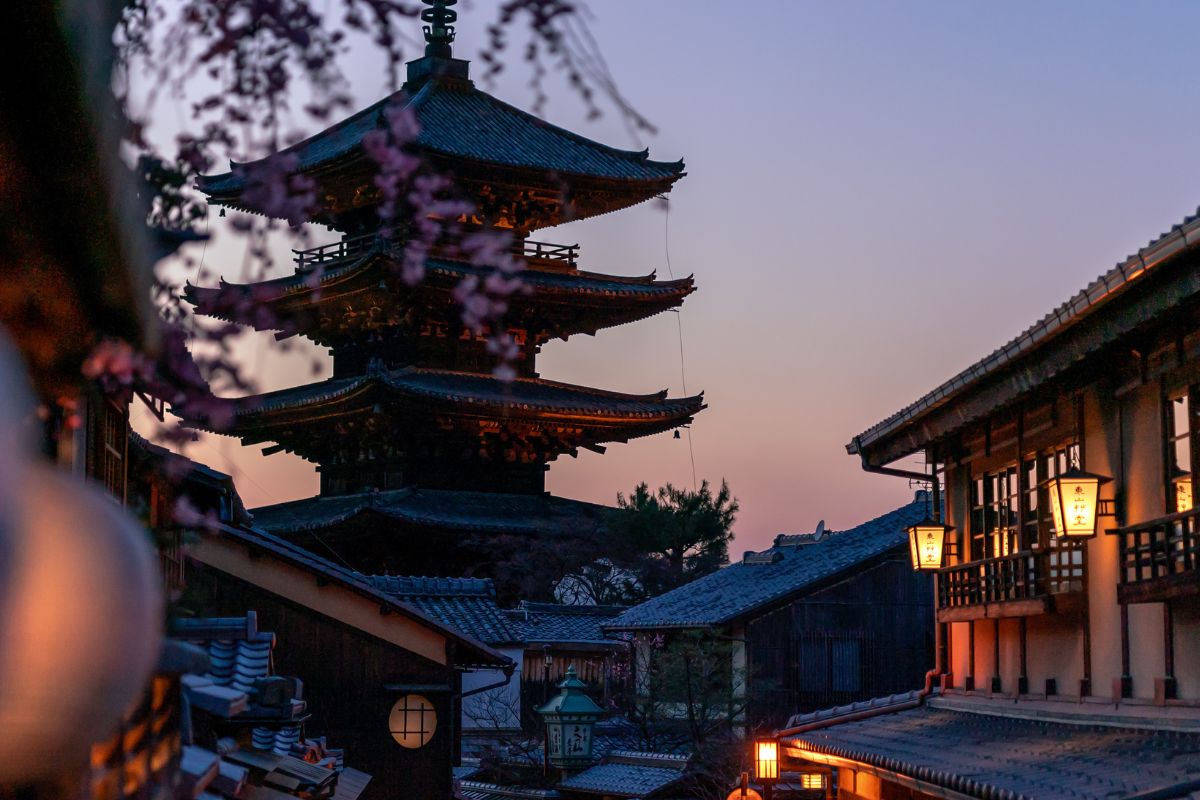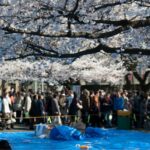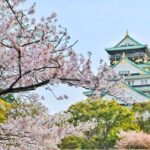Let the serene allure of Nara whisk you away on a journey back in time. The intoxicating blend of ancient history and natural beauty entwined in Nara invites you to explore a realm where divine deer roam freely and centuries-old temples stand majestically. Visiting Nara is simply a must when heading to Japan.

Situated less than an hour away from Kyoto, Nara was the first permanent capital of Japan. It boasts a rich tapestry of historical sites and scenic beauty, blending the tranquility of its lush landscapes with the grandeur of its majestic temples.
This blog post will take you on a tour of the enchanting city of Nara. We’ll dive deep into its rich historical past, the mystique of its famous Deer Park, and the many treasures waiting to be discovered. You’ll soon discover why this should be on your to-do list when taking a trip to Japan.
Historical Background of Nara
Nara’s place in history was firmly established when it became Japan’s first permanent capital in 710 AD, a city that the Japanese affectionately call Nara Heijo-kyo. It was during this time that Nara evolved into a cradle of culture, politics, and architecture.
This period saw the rise of Buddhism as a dominant religious force. This led to the construction of grand temples and shrines that would become symbolic of Nara’s landscape. Notable among these are the Todaiji, Kasuga Taisha, and Horyuji, which are temples that encapsulate the spiritual essence of the city.
- Todaiji is a renowned Buddhist temple in Nara, famous for its massive bronze statue of Buddha and its grandeur as one of the world’s largest wooden structures.
- Kasuga Taisha is a Shinto shrine known for its beautiful vermilion-colored buildings, thousands of stone lanterns, and its association with the deer considered sacred in the area.
- Horyuji is a historic Buddhist temple complex recognized as one of the oldest wooden structures in the world. It houses numerous cultural treasures, including the world’s oldest surviving wooden pagoda and a rich collection of Buddhist art and artifacts.
Today, Nara proudly retains its historical treasures, reflected in its eight UNESCO World Heritage sites, which make the city a fascinating place for history buffs and architecture enthusiasts alike.
Nara Park: A Sanctuary for Sacred Deer
In the heart of the city lies the vast Nara Park, home to over a thousand free-roaming Sika deer, regarded as sacred messengers of the gods.
The divine status of these deer traces back to a legend wherein a deity arrived in Nara on a white deer.
Today, these creatures enjoy a protected status, further adding to Nara’s mystical charm.
Visitors can interact with the friendly deer, feeding them deer crackers, or shika senbei, a unique experience that allows a fascinating insight into wildlife.
Although the deer are gentle, visitors should follow guidelines for maintaining a respectful and safe interaction. This will ensure a memorable experience for all.
Understanding why deer are sacred in Nara
Deer are sacred in Nara due to their association with the Shinto religion and the local mythology.
According to legend, a deity named Takemikazuchi arrived in Nara riding a white deer. Since then, deer have been revered as divine messengers of the gods.
The deer in Nara are believed to be sacred protectors of the city. They are treated with great respect and care.
Today, the deer roam freely in Nara Park. They’re protected as a national treasure, creating a unique and cherished relationship between humans and these gentle creatures.

Nara’s Cultural Treasures
The Nara National Museum
The Nara National Museum houses an extensive collection of Buddhist art, providing a profound glimpse into the city’s religious history. From intricately carved statues to ancient scriptures and exquisite paintings, the museum offers a captivating journey through Nara’s rich religious heritage.
Naramachi district
Naramachi district, nestled in the heart of Nara, exudes an old-world charm. This is thanks to its well-preserved traditional machiya houses and narrow winding lanes. Walking through this historic neighborhood allows visitors to immerse themselves in the atmosphere of ancient Japan, with its traditional shops, cafes, and nostalgic ambiance.
Restaurants and eateries
Gastronomy enthusiasts can explore a variety of Japanese cuisine and local delicacies at the city’s array of restaurants, making Nara a haven for food lovers. From local specialties like kakinoha-zushi (sushi wrapped in persimmon leaves) and narazuke (pickled vegetables) to a wide range of delicious Japanese cuisine, the city offers a delightful gastronomic experience.
Seasonal Delights in Nara
Depending on the time of year, Nara will delight you in different ways. For example, Nara Park turns into a canvas painted with hues of pink during cherry blossom season, making it a must-see spectacle for visitors.
Autumn adorns the city’s gardens and temples with a brilliant palette of reds, oranges, and yellows. This renders the city even more picturesque.
There are festivals at Nara throughout the year
Nara hosts traditional festivals, two of the most famous being:
Omizutori, a fire and water purification ceremony
Omizutori is an annual Buddhist event held at Todaiji Temple in Nara, Japan. It takes place from March 1st to March 14th every year. During Omizutori, monks perform a series of rituals and ceremonies, including the impressive “Fire Festival,” where large torches are lit and carried down the temple balcony.
Nara Tokae, where thousands of candles light up the city
Nara Tokae, also known as the Nara Lantern Festival, is held in Nara Park during the winter season. The festival typically takes place for several evenings in early February, illuminating the park with thousands of beautiful lanterns. The exact dates for Nara Tokae may vary each year. So it’s advisable to check the specific dates for the current year to experience this enchanting event.
Day Trips from Nara
- A day trip to Yoshino is a must during cherry blossom season. Famous for its thousands of cherry trees, Yoshino offers scenic beauty that captures the heart.
- The historic city of Kyoto, rich in cultural and historical sites, is just a short train ride away. It offers another peek into Japan’s fascinating past.
- The tranquil environs of Mount Koya, with its ancient Buddhist monastic complex, provide a spiritual escape from bustling city life.
Practical Information for Visitors
- Nara is conveniently accessible by train from major cities like Osaka and Kyoto. Once in Nara, the city is easily navigable on foot or by public transportation.
- There’s accommodation to suit all budgets, from traditional ryokans to modern hotels, ensuring a comfortable stay for every traveler.
- You can visit Nara year-round, but spring and fall are particularly captivating due to the cherry blossoms and autumn foliage. Regardless of the season, plan ahead to ensure a fulfilling trip.
- Always ensure you follow safety guidelines, especially while interacting with the deer. Learning a few essential Japanese phrases can also enhance your travel experience.
A place of true beauty and historical significance
Nara, with its historical significance and natural beauty, offers a unique blend of serene spirituality and captivating culture. The experience of walking amidst sacred deer in Nara Park, under the shadow of grand temples, is a memory to cherish.
Visiting Nara is more than just a sightseeing tour. It’s a journey back in time, an exploration of Japan’s roots, a conversation with nature, and an interaction with friendly deer.
So pack your bags, embrace the charm of ancient Japan, and lose yourself in the mesmerizing city of Nara. Whether you’re a history enthusiast, nature lover, or a culture vulture, Nara holds treasures that will enrich your soul and captivate your heart.
- Writing & Understanding Haiku Poetry - May 25, 2023
- Shinkansen Bento: A Guide to the Delicious Train Station Box Lunches - May 25, 2023
- What is Takoyaki? - May 25, 2023

